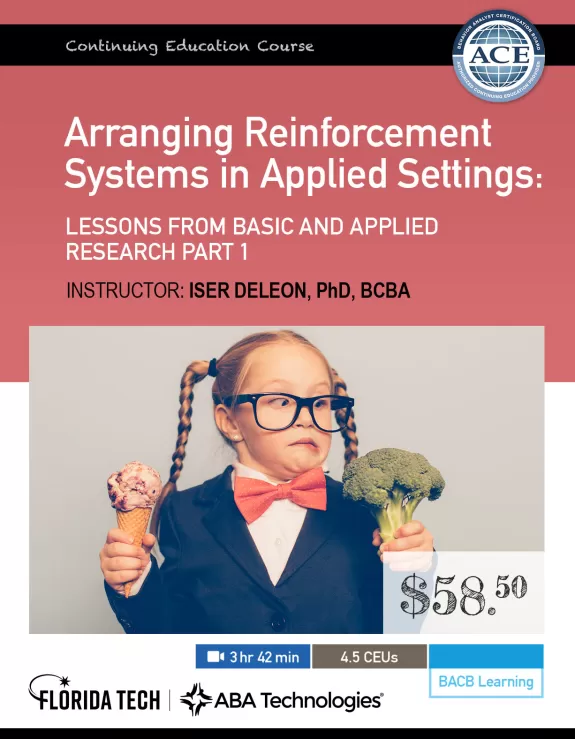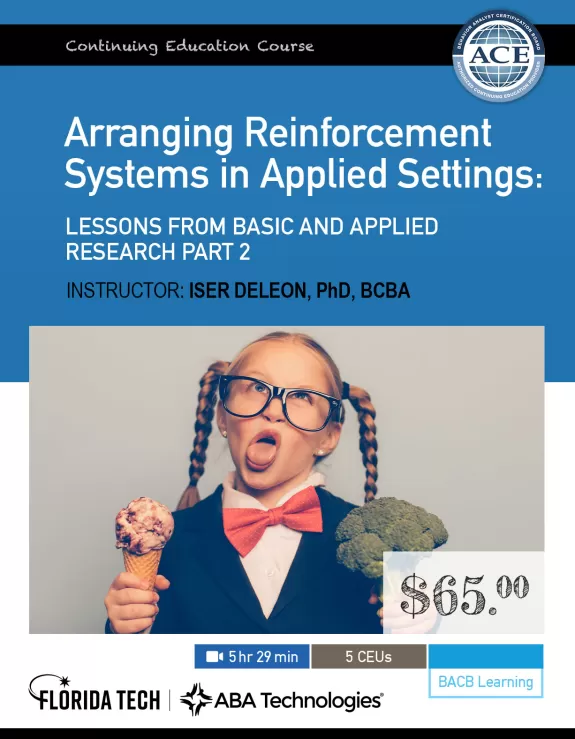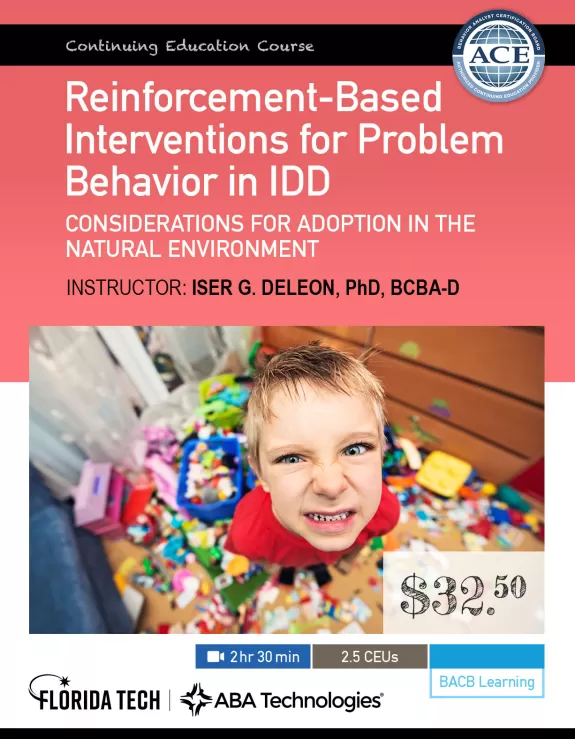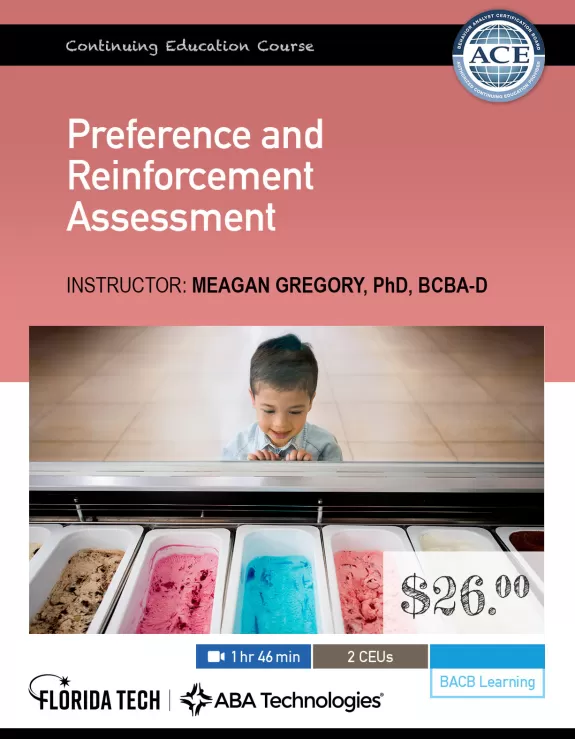Arranging Reinforcement Systems in Applied Settings Part 1
Abstract
Stimulus and reinforcer preference assessments are commonly covered in applied behavior analytics programs in reference to clinical work. Dr. Iser DeLeon takes what we know about these assessments even further. He reviews the purpose of systematic preference assessment and how to conduct various forms while learning to understand the relationship between stimulus and reinforcement preference assessments. Dr. DeLeon discusses questions about stability of preferences and values and how these changes can affect stimuli as reinforcers.
Learning Objectives—What you’ll learn in the course and be able to do afterward
After reviewing stimulus preferences, you should be able to
- list and give relative advantages and disadvantages of various forms of preference assessments;
- define and identify false-positive and false-negative outcomes in preference assessments;
- determine, under what conditions, to use a particular preference assessment.
After assessing the strength of reinforcers, you should be able to
- map the relationship between stimulus preference assessments and reinforcer assessments;
- list the various methods to conduct reinforcer assessments;
- describe the relative strength and limitations of single-operant assessments and concurrent-schedule assessments;
- describe and develop a progressive-ration schedule and what it can tell you about reinforcer value.
After a review of shifts in preference and stimulus value, you should be able to
- state why we are concerned about shifts in stimulus preferences;
- discuss results related to whether preferences remain constant across time;
- be able to remediate these changes in stimulus preferences and how they are related to changes in the effectiveness of those stimuli as reinforcers;
- explain the danger inherent in conducting only one preference assessment.
Partnership
This course is delivered through Florida Tech. Clicking "Enroll Now" will take you to Florida Tech’s website where you can Add to Cart, Checkout, and complete the course. Come back to our website for podcasts, blogs, courses, and content.




